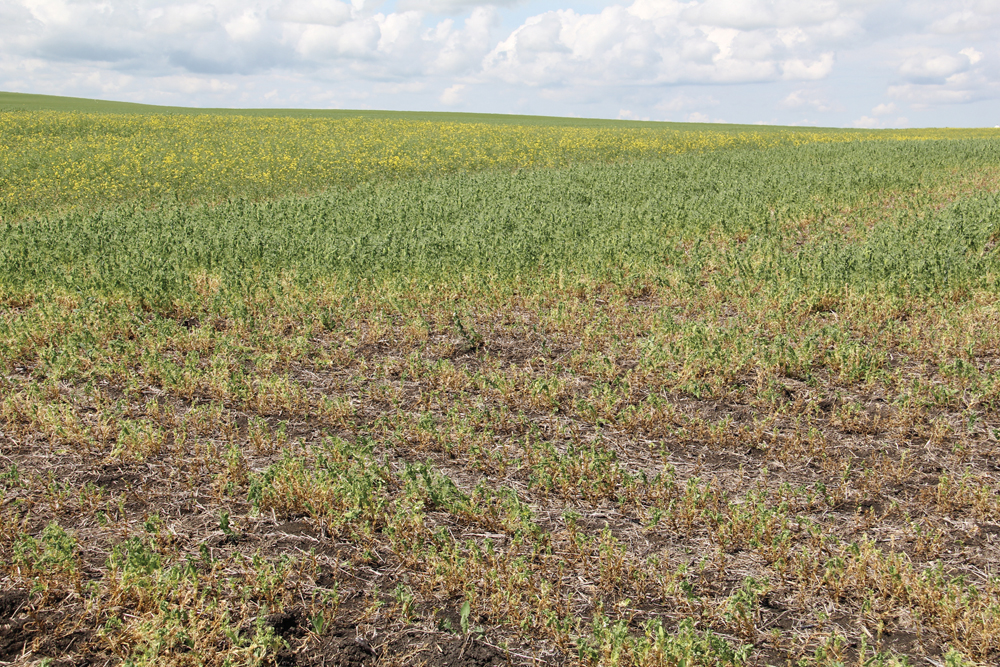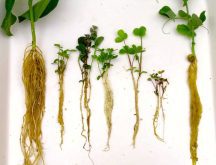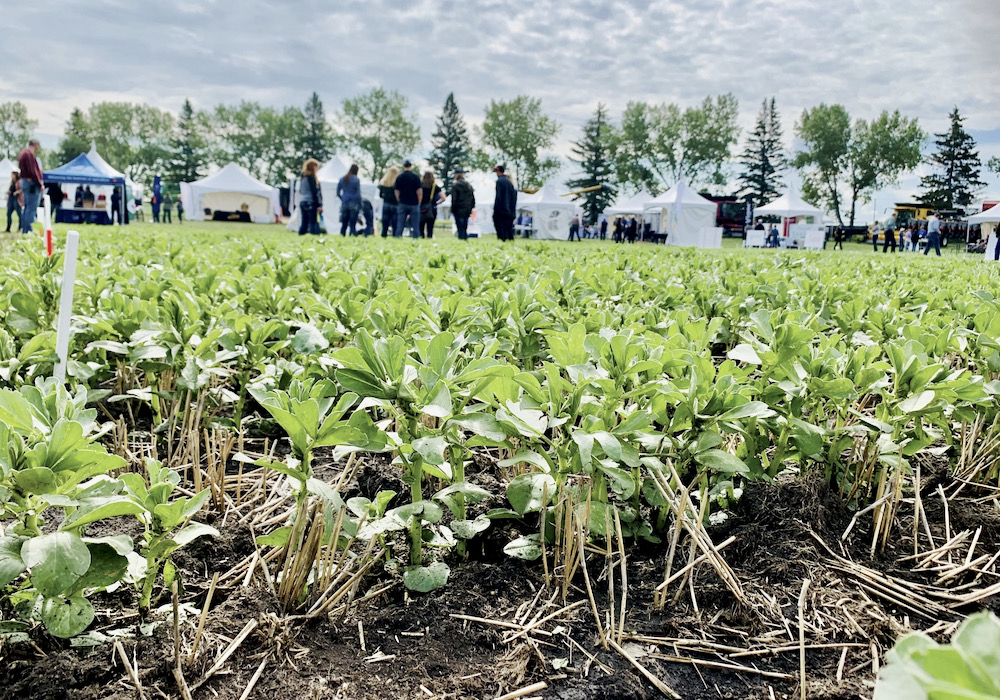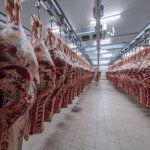Syama Chatterton had a hunch that pea root rots would be less of a problem in a dry year.
And sometimes, she said, “it’s nice to be right.”
“Root rot severity was definitely lower in 2015 compared to what we had seen in 2013 and 2014, which were very wet years,” the federal research scientist said at Agronomy Update in mid-January.
In 2013, researchers began “extensive surveys” across the province for pea root rots and found two major culprits for the disease — aphanomyces and fusarium.
“Aphanomyces root rot is more predominant in the central area of Alberta, particularly in the Black soil zone,” said Chatterton.
Read Also
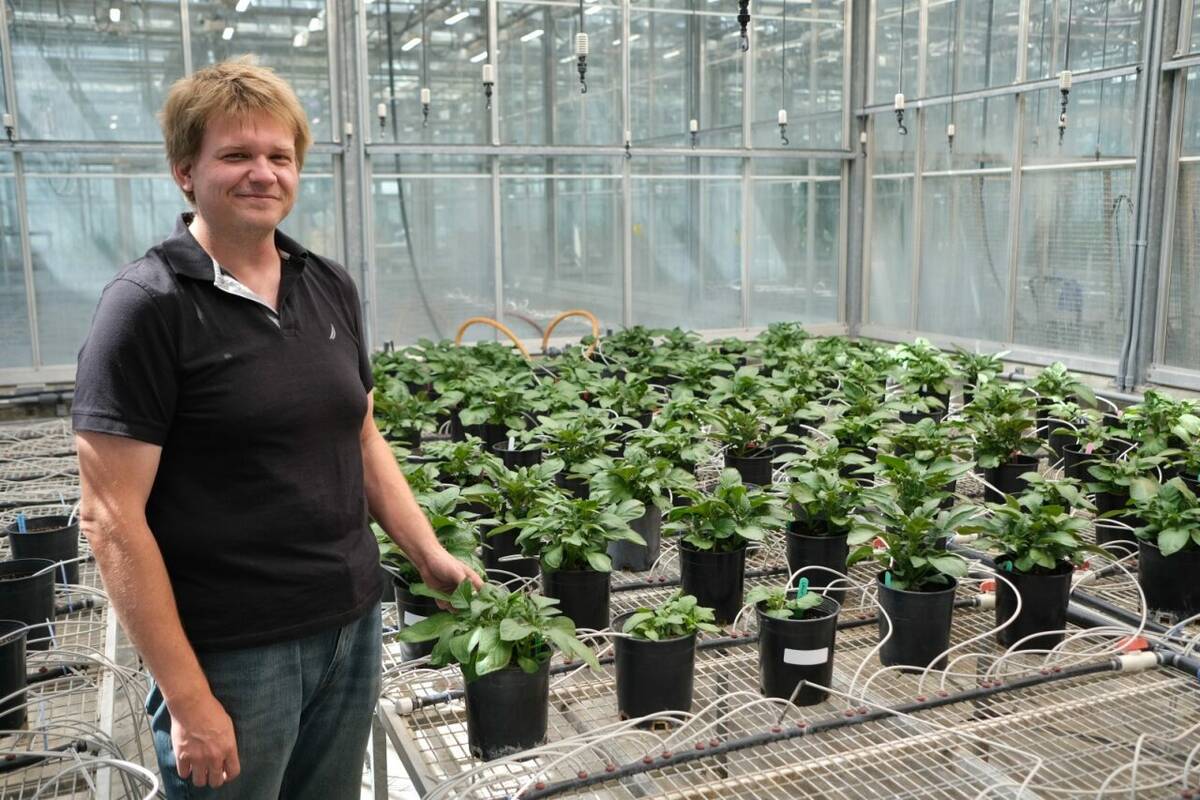
Hail research hopes to benefit potato growers
Alberta research scientist measures hail storm and heat dome affects on potato crops
“Fusarium root rot is more predominant in southern Alberta in the Brown and Dark Brown soil zones.”
Both diseases can cause severe damage to root systems in pulse crops such as peas, lentils, and some varieties of dry bean. And the economic losses can be devastating.
Using a rating scale of 1 to 7 (where 1 means healthy and 7 means dead), researchers scored over 170 fields in Alberta and found a significant increase in root rots from 2013.
“In 2014, we found a prevalence of 100 per cent, meaning that every field we went into, we could find an instance of root rot,” said Chatterton, adding the average severity in the province was 3.2, or moderate.
In central Alberta, aphanomyces were the big problem in 2014 — Chatterton found the pathogen in 77 out of 174 fields.
“In the Black soil zones, aphanomyces were present in about 66 to 84 per cent of the fields,” said Chatterton. “The Dark Brown soil zone had an average disease severity of about 3.5 — that moderate category — but only 37 per cent of the fields in the Dark Brown soil zone were positive for aphanomyces.
“In the Brown soil zones, there was a fairly high disease severity of about 3.2, but even less of those fields were positive for aphanomyces — only about 18 per cent.”
But 2015 was a different story altogether.
“We still found a prevalence of about 100 per cent, so again, every field we went into, we could find root rot, but severity was lower, at about 2.8,” said Chatterton.
“There were no fields in 2015 that had that severity of 6 or 7. Things looked a lot healthier.”
Risk factors
In almost all cases, the root rots developed after rain events, said Chatterton.
“The end of June was really dry, but some areas had some rainfall in early July, and you could start to see some yellowing patches popping up in the field,” she said.
“Soil moisture is very important for aphanomyces. The spores can start hatching in dry conditions, but they won’t infect.”
And because of that, soil compaction is “another big risk factor.”
“Generally, clay soils with about 30 to 40 per cent clay content that are more prone to waterlogging are going to have more of a disease issue.”
Aphanomyces also like soils with a pH in the 5.6 to 6.6 range and at temperatures of 20 C to 24 C.
“That’s why we usually start seeing these root rots popping up toward the end of June and into July when your soil temperatures have warmed up.”
But the biggest risk factor is crop history.
Aphanomyces can survive in the soil for five to 10 years, so even with a good crop rotation, farmers face some risk.
“Once you’ve had about four to five cropping cycles with susceptible hosts in a field, that’s usually when we see aphanomyces root rot can become a problem,” said Chatterton, adding less susceptible crops like fababeans, soybeans, and chickpeas provide good alternatives for the rotation.
But while aphanomyces are so far limited to pea crops in central and northern Alberta, that could change as other susceptible pulse crops gain traction in the south.
“We did find about 18 to 30 per cent positive fields in southern Alberta,” said Chatterton.
“So far, the root rot problem is confined to peas, but as lentil acreage starts to increase and maybe starts to be rotated with peas, it does have potential to cause a lot of damage in lentils.”

